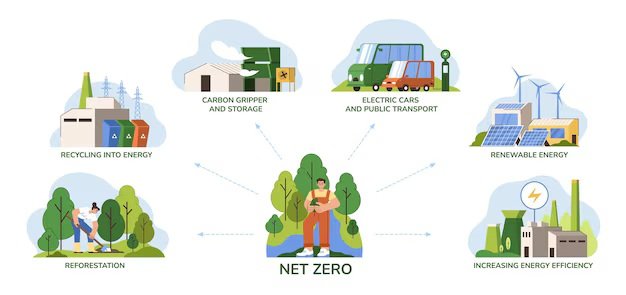Pros and Cons of the Paris Agreement
In January 2025, scientists confirmed that 2024 was the hottest year ever recorded—global temperatures reached 1.6 °C above pre-industrial levels. That figure isn’t just a statistic. It means we’ve now crossed the critical 1.5 °C threshold the Paris Agreement was designed to help us avoid. This moment should feel personal to all of us. It’s not about far-off warnings anymore; it’s about what’s happening now—in our cities, farms, coastlines, and homes.
That’s why the Paris Agreement matters more than ever. It isn’t just a political document; it’s a living plan to help us work together, adapt faster, and invest smarter. With nearly every country on board, it creates a shared sense of purpose. Its structure—built on regular reviews, national plans, and transparency—keeps the pressure on and the conversation going. And while it’s not perfect, the Agreement gives us a common direction in a fragmented world—and that’s a powerful place to start.

In This Article
- What Is the Paris Agreement?
- Pros of the Paris Agreement
- Cons of the Paris Agreement
- Experiences & Expert Voices
- Conclusion: Actionable Advice
What Is the Paris Agreement?
The Paris Agreement is a legally binding international treaty adopted on 12 December 2015 and activated in November 2016, uniting nearly 200 countries in a shared plan to fight climate change. Its central aim is to keep the global temperature rise well below 2 °C above pre-industrial levels, while striving to cap warming at 1.5 °C, and to reach net-zero greenhouse gas emissions by mid-century.
To drive this change, the Agreement sets a five-year cycle. Every five years, the Global Stocktake checks collective progress. The first one concluded at COP28 in late 2023 and concluded that while momentum has built, we’re still far from the 1.5 °C pathway. As a result, countries are now urged to intensify their efforts and submit stronger, more aligned commitments for 2025.
Each nation sets its own emissions goals—its Nationally Determined Contributions (NDCs)—and must update them every five years, ensuring each round reflects greater ambition. Developed nations also report regularly under a robust Enhanced Transparency Framework, helping build trust and accountability, especially for developing countries.
Pros of the Paris Agreement
1. Global Cooperation & Inclusivity
One of the Paris Agreement’s most powerful strengths is that practically every nation on Earth committed to it—195 countries signed up to a unified climate framework. That kind of widespread agreement is rare. It shows that, despite diverse cultures, economies, and political systems, nearly the entire globe agrees that climate change is real and requires collective action. It sets a global tone: this is a problem that transcends borders and must be handled together.
This unity also ensures that no country is acting alone, or potentially exploiting others for inaction. Rich and poor nations alike are expected to contribute, so efforts are shared and coordinated. It’s a real, moment-by-moment international partnership built on transparency and regular check-ins, reinforcing trust. That trust is vital: no country wants to be the lone hero—or the lone laggard.
2. Emissions Reduction & Ambitious Temperature Goals
The Agreement adopts science-based objectives by striving to limit global warming “well below 2 °C, with efforts to limit the increase to 1.5 °C.” That 1.5 °C benchmark isn’t mere rhetoric—it marks the boundary between manageable and catastrophic climate effects such as coral reef collapse, intense heatwaves, accelerating ice melt, rising sea levels, and more severe storms.
By establishing this clear temperature framework, the Agreement creates a strong incentive for nations to accelerate their transition to renewable energy, electrify transportation, enhance building efficiency, and reduce overall emissions. This commitment channels investment into green technologies, spurs public infrastructure upgrades, fosters energy independence, and encourages consistent, measurable emissions reductions.
Importantly, this strategy is grounded in both environmental necessity and practical benefit. As emissions decline, innovation accelerates, boosting sustainable business practices and reinforcing a global alliance built around a scientifically proven roadmap that yields tangible climate progress.
3. Nationally Determined Contributions (NDCs)
One of the Paris Agreement’s most creative mechanisms is the idea of Nationally Determined Contributions (NDCs). Rather than imposing one-size-fits-all targets, each nation puts forward its own emission-reduction plan, tuned to its capabilities and circumstances. And crucially, these plans can and should be updated every five years.
This flexibility encourages ownership and adaptability. A small island nation might focus on resilience and protecting coral reefs; an emerging economy might scale solar power and manage deforestation. The UNFCCC’s 2024 NDC Synthesis Report outlines that 94% of nations submitted quantified targets, and 81% included economy-wide commitments. That’s massive buy-in.
Regular revisions ensure this system won’t stagnate. As new technologies become cheaper and more accessible, nations can raise their ambition, making the system evolutionary rather than static.
4. Support for Developing Countries
Recognising that poorer nations often lack financial and technical resources, the Paris Agreement commits to climate finance—aiming to mobilise $100 billion annually from developed to developing countries through 2025—along with support for tech transfer, capacity-building, and adaptation planning.
In May 2024, the OECD reported that rich countries collectively surpassed this target, providing $115.9 billion. That’s progress. But many experts believe it’s just the beginning. Consensus is shifting toward a far more ambitious goal—potentially reaching hundreds of billions or even a trillion dollars per year—to match the scale of global decarbonization and adaptation needs.
Recent research makes the case even stronger. A 2024 policy brief by economists Patrick Bolton, Alissa Kleinnijenhuis, and Jeromin Zettelmeyer shows that directing around $225 billion annually in public climate finance—about 0.3–0.6% of G7+EU GDP—could help mobilise nearly $1 trillion in total clean power investment in developing nations. By blending public and private capital, this strategy not only accelerates energy transitions but also offers high economic returns through avoided climate damages. In short, supporting developing countries is not just an act of global solidarity—it’s sound economic policy.
5. Regular Review and Transparent Reporting
Instead of vague public promises, the Paris Agreement requires nations to report progress periodically and undergo international review. That enhanced transparency framework means each country publishes updates, scientific progress is pooled, and the global community can hold nations accountable.
Under the Agreement, countries must submit reports every two years, with independent expert review and multilateral scrutiny. This process builds trust, discourages dishonesty, and allows each country to learn best practices, creating a global feedback loop that boosts results over time.
6. Broad Co‑benefits: Clean Energy Innovation, Jobs, Health & Ecosystems
Beyond climate goals, the Paris Agreement unleashes co-benefits that advance development, public health, and social justice.
Green jobs and economic growth
IRENA’s 2023 Outlook forecasts a dramatic expansion in energy-sector jobs under the 1.5 °C pathway—up to 134 million jobs by 2030, with renewable‑energy jobs tripling to 40 million by 2050. Meanwhile, a study published in 2024 by the Renewable Energy Institute reported a surge from 13.7 million jobs in renewables in 2022 to 16.2 million in 2023—an impressive 18% annual rise.
Cleaner air and better health
Switching from coal, oil, and gas toward clean energy means less air pollution. That results in fewer respiratory illnesses, reduced healthcare costs, and lower mortality—tangible benefits for everyday people. Many studies link renewables to immediate improvements in public health, although I haven’t cited a specific one here, but it’s a well-established fact in environmental research.
Ecosystem protection and resilience
By aiming for 1.5 °C, the Agreement significantly improves odds for preserving coral reefs and tropical forests, maintaining biodiversity, and the livelihoods that depend on them. Plus, climate finance helps communities strengthen defences against floods, droughts, and extreme weather, blunting the economic shocks to vulnerable lands .
Cons of the Paris Agreement
1. Non-binding & Lack of Enforcement
One major drawback is that the Paris Agreement is fundamentally non-binding. Countries submit their own emission reduction commitments—called Nationally Determined Contributions (NDCs)—but there’s no legal penalty if a country fails to follow through. Instead, the system relies on “naming and shaming” to encourage compliance.
Experts warn that leaving action up to voluntary efforts makes loopholes common. A 2025 policy brief by CEEW highlighted that without hard enforcement mechanisms or financial accountability, many pledges can go unfulfilled without consequence.
2. Pledges Are Too Weak
According to a report by Reuters, even if all current NDCs are fully implemented, the world is still on track for 3 °C of warming by 2100, far beyond the Paris Agreement’s goal of “well below 2 °C” and ideally no more than 1.5 °C.
- UN Emissions Gap Report (October 2024): Forecasts a warming range of 2.6 to 3.1 °C by 2100 under current policies.
- Climate Action Tracker (Nov 2024): Shows current NDCs and policies leave the world entering the 2.1–2.9 °C range, well above targets.
- Earth System Data Study (June 2024): Warns that we may hit 1.5 °C warming as soon as 2028, which reflects the urgency of stronger action now.
Multiple independent analyses show that if all current NDCs are fully implemented, the world is still on track for 3 °C of warming by 2100, far beyond the Paris Agreement’s goal of “well below 2 °C” and ideally no more than 1.5 °C.
The UN Emissions Gap Report (Oct 2024) projects a likely warming range of 2.6 to 3.1 °C under current policies. Similarly, Climate Action Tracker (Nov 2024) finds that existing pledges and policies will result in warming between 2.1 and 2.9 °C. The UN Environment Programme echoes these warnings, estimating a 2.5–2.9 °C rise if current promises remain unchanged.
Even more urgently, the Earth System Data Study (June 2024) warns that the world could breach the 1.5 °C threshold as early as 2028, highlighting how little time remains for decisive action. These findings collectively reveal that without significantly stronger commitments and implementation, the Paris Agreement’s temperature goals will remain out of reach.
3. Vague & Uneven Targets
The Agreement’s language often mixes firm commitments (“should”) with aspirational ones (“pursue efforts”), giving countries wiggle room to interpret goals loosely. That vagueness leads to uneven targets, making true global cooperation uneven and inconsistent.
A recent MIT journal article even coined this the “ambition trap”: governments make bold pledges but lack the internal policies or infrastructure to implement them, undermining long-term credibility.
4. Financial Shortfalls
In 2009, developed nations committed to mobilising US$100 billion per year by 2020 to support climate action in developing countries. However, actual delivery has fallen short, particularly for adaptation, loss, and damage initiatives.
A Bonn conference in June 2025 reiterated concerns that, despite promises of $1.3 trillion annually by 2035 for climate mitigation in vulnerable nations, developed countries have still not fully met their funding obligations.
Funding delays disproportionately impact low-income countries, undermining trust in the Agreement and preventing equitable progress.
5. Potential for Greenwashing
Many governments and corporations rely on carbon offsets and market-based mechanisms to claim emissions reductions without actually cutting pollution. While Article 6 rules are evolving, the voluntary carbon market remains fragile and fragmented, with limited oversight, letting some offset programs exaggerate their impact.
This “greenwashing” undermines the agreement’s credibility. Projects may claim emission credits, but few require real, measurable, lasting reductions, and oversight is often industry-led rather than governmental.
6. Economic & Political Resistance
Paris commitments can collide with domestic political realities:
- Rising energy costs: Transitioning to cleaner energy can lead to increased prices, which can hit consumers hard.
- Job losses in fossil-fuel sectors: Regions dependent on coal, oil, and gas may resist changes that threaten livelihoods.
This domestic resistance can lead to a rollback of climate policies, especially under new administrations, like shifts seen in the U.S. when it rejoined under Biden in 2021, only to have discussions about another withdrawal under Trump in early 2025.
7. Implementation Disparities
Countries vary hugely in capacity, economic structure, and political will. Wealthy nations have a greater ability to invest in infrastructure, adopt renewables, and enforce standards. Meanwhile, many developing nations face barriers such as limited technical capacity, infrastructure challenges, and less political priority on climate issues.
A 2025 panel study of 106 middle‑income countries found no significant shift in CO₂ trends post-Paris, suggesting that without stronger national policies, agreements alone don’t drive meaningful change.
Experiences & Expert Voices
Christiana Figueres, former UNFCCC Executive Secretary, says the Paris Agreement “stops just short of a fossil‑fuel phase‑out—but gives governments, cities and companies the signal: the world is going low‑carbon.” Her view highlights how the deal sets a clear direction even without mandates.
Climate scholar James Hansen, however, calls Paris “a fraud with no action, just promises.” That echoes warnings from governance experts, cautioning that without equity, “effort may be undermined by uneven participation and varying levels of ambition.”
Reddit users reinforce this, noting “only two countries… Morocco and Gambia” are on track—“none of the major polluters… are even close.” Their point: legal commitments mean little without real implementation.
Economist Bjørn Lomborg also weighs in, warning the price tag could reach $1–2 trillion per year while cutting temperatures by just 0.3 °C—a figure many see as too modest for the investment.
Learn More: International Environmental Regulations
Conclusion: Actionable Advice
For Policymakers:
- Enshrine NDC targets in law. Turning Nationally Determined Contributions into binding legislation builds trust—both domestically and internationally—that governments will follow through.
- Deliver genuine climate finance. Wealthy nations promised $100 billion annually; that amount should be entirely in grants, not loans, to avoid increasing debt burdens in vulnerable countries.
- Enhance carbon pricing frameworks. Evidence shows that stronger carbon taxes or emissions-trading systems reduce CO₂ emissions effectively—e.g., a $10/ton tax cut per capita emissions by ~1.3% short‑term and ~4.6% over time.
For Businesses & Investors:
- Treat Paris-aligned climate goals as core business risk. Embed emissions reduction and net-zero targets into strategic and financial planning.
- Fund climate innovation. Focus on areas like solar, green hydrogen, and high-integrity carbon capture technologies. Public‑private partnerships can bridge finance gaps.
For NGOs & Academia:
- Empower civil society watchdogs. Monitor national progress and push for transparency on NDC delivery—and hold governments accountable.
- Use human‑rights litigation. Growing cases like Brazil’s Amazon ruling show courts are enforcing constitutional protections via climate commitments.
For Individuals:
- Get active locally—join tree‑planting, reef restoration, or cleanup initiatives in your community.
- Make climate-smart choices—eat plant-forward, reduce what’s wasted, and support renewables.
- Vote thoughtfully—back leaders with strong climate policies.







